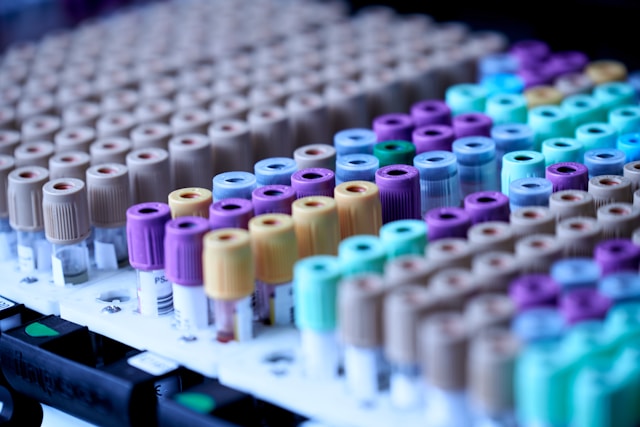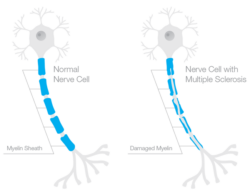In Thiamine Deficiency in Modern Medical Practice and Threats to Thiamine Sufficiency in the 21st Century, I introduced the concept that thiamine deficiency underlies many common conditions plaguing modern healthcare and identified exposures and mechanisms threatening thiamine stability. In Hyperglycemia and Low Thiamine: Gateways to Modern Disease, I summarized the pattern of metabolic changes associated with modern dietary practices that lead to thiamine insufficiency, hyperglycemia, diabetes, cardiovascular and Alzheimer’s disease. In this document, I will tackle thiamine testing.
Background
As discussed in the previous articles and elsewhere on this website, thiamine is a critical and rate-limiting nutrient for several of the cytosolic and mitochondrial enzymes responsible for the conversion of food into cellular energy or ATP. As such, decrements in thiamine ingestion imperil cell function systemically, leading to the onset, maintenance, and/or exacerbation of a host of illnesses.
Thiamine has a short half-life, 1-12 hours, and absent sufficient and/or regular consumption, thiamine reserves will be depleted entirely within 2-3 weeks. The risk of acute deficiency is common after an extended illness where consumption or absorption is reduced, while excretion or metabolism is increased. This includes any illness where nausea, vomiting, and/or diarrhea are present; where intestinal absorption is compromised, such as with Crohn’s, Celiac, constipation, dysbiosis, or gastric bypass; where excretion is increased such as with diabetes and kidney disease; where fever or the severity of the illness increases the demands of metabolism e.g. hypermetabolic states such as sepsis, burn patients, and in critical care cases more broadly where the metabolic demands of the illness itself and the anti-thiamine qualities of many medications overwhelm thiamine availability. Pregnancy, especially when hyperemesis is involved, should also be considered a hypermetabolic state where thiamine deficiency develops more frequently than recognized and is associated with common complications.
Of the studies that have investigated thiamine deficiency in critical care, the incidence range for deficiency varies by study criteria from 10% to 90% upon admission and increases steadily with each day in the ICU. This suggests that even if the patient is not thiamine deficient upon admission, he/she may become so as time progresses.
The progression to severe thiamine deficiency in the face of critical illness will be expedited if the patient’s premorbid health was challenged by chronic illness that included the use of thiamine-depleting medications, and/or where poor diet and chronic alcohol, drug, or tobacco use were present. Subclinical thiamine deficiency or insufficiency may characterize a majority of patients dealing with chronic illness. It is not well defined, but given the chemistry of thiamine against the backdrop of modern diets and medicines, it is logical to presume that many patients dealing with chronic illness consume insufficient thiamine relative to the demands of their metabolism and are but one crisis away from frank deficiency (see Threats and Hyperglycemia documents for details).
Ideally, the recognition and treatment of thiamine insufficiency would be considered before frank deficiency manifests. Unfortunately, current laboratory testing provides neither guidance on subclinical thiamine deficiency or insufficiency nor consistent definitions of what values constitute frank deficiency. As such, a patient tested at one lab may be considered deficient, while at another, may fall within the normative ranges, even if each lab uses the same methods. Similarly, depending upon the testing equipment and methods, the patient’s thiamine status may be more or less sensitive to recent thiamine intake or other confounding variables that skew the results towards sufficiency when in fact the patient is deficient.
Conventional Methods of Measurement
For clinical purposes, the most important thiamine analyte is thiamine pyrophosphate (TPP), also called thiamine diphosphate (ThDP/TDP). Additional phosphates can be added or subtracted to form thiamine triphosphate (TTP/ThTP) and thiamine monophosphate (TMP/ThMP), which are detectable by different laboratory measures, but as of yet, their utility in the clinic has not been fully extrapolated. It should be noted that the phosphorylation of free thiamine into TPP, requires magnesium and ATP, and so, among the factors that will affect TPP values is magnesium deficiency.
Thiamine may be tested from whole blood, erythrocytes, serum, plasma, and urine. From whole blood, all three derivatives of free thiamine can be obtained. Thiamine pyrophosphate accounts for almost 90% of circulating thiamine, 80% of which, is found in erythrocytes. Free thiamine, TMP, and TTP are found primarily in serum, plasma, and urine.
Whole Blood TPP
Whole blood measures of TPP utilize liquid chromatography-tandem mass spectrometry (LC/MS/MS) or high-performance liquid chromatography (HPLC). In the US, the reference ranges TPP from two major labs, Quest Diagnostics, and LabCorp, are 78-185 nmol/L and 66.5−200.0 nmol/L, respectively. Both use LC/MS/MS. Published reference intervals for whole-blood TPP vary widely across labs, however, from a lower limit of 63–105 nmol/L to an upper limit of 171–229 nmol/L. There is no consensus regarding what value constitutes deficiency and little recognition of what may constitute borderline or insufficient thiamine. Under some conditions, TMP, TTP, and total thiamine values will be reported. There are no consistent reference ranges for these analytes either.
Erythrocyte Tests
Erythrocyte tests derived from whole blood samples may measure TPP directly from isolated erythrocytes, such as with HPLC, or indirectly, such as in the case of the erythrocyte transketolase activation test (ETKA). TPP measured erythrocytes using HPLC requires additional laboratory steps, mostly done for research purposes. Reports suggest that HPLC whole blood TPP and HPLC erythrocyte TPP correlate. Similarly, the research suggests that HPLC whole blood TPP and ETKA tests correspond, but there is much debate regarding which one is more accurate.
Unlike the direct assessment of circulating TPP, the ETKA test measures both basal and thiamine-stimulated activity of the thiamine-dependent enzyme transketolase. Test values are reported as a ratio or percentage of enzyme activation. When thiamine concentrations are sufficient, the addition of thiamine will not activate the transketolase enzyme. When thiamine is insufficient or deficient, transketolase activity will increase proportionately to the deficiency. Higher values correspond with the severity of deficiency.
Although there is no consensus regarding what constitutes deficiency for this test either, the continuum of values supports a gradation of need, which may be more useful clinically, particularly with borderline cases and when clinical symptoms correspond. Accordingly, greater than 17% enzyme activation is indicative of thiamine deficiency clinically whereas experimentally, particularly when comparing the sensitivity of different laboratory tools, >25% activation is considered deficient. It should be noted that the ETKA may correlate better with clinical conditions in thiamine-replete patients but may be problematic in patients with magnesium deficiency or when transketolase protein levels are diminished due to liver disease or diabetes.
The EKTA test was considered the gold standard for 50 years, but it is a time and manpower-intensive test, with a high risk for inter-batch variability. As such, and despite its favorable clinical utility, it has fallen out of favor. Currently, the EKTA test is performed only by research institutions and in a few private labs.
Plasma, Serum, and Urinary Tests
Plasma/serum contains only a small fraction of circulating thiamine relative to the erythrocytes and is sensitive to recent intake. As such, tests using plasma or serum are considered less accurate diagnostically but some labs still offer these tests. The reference range for Quest is 8-30 nmol/L. More commonly, plasma measures of thiamine are used for research purposes. Similarly, urinary measures of free thiamine, TMP, and other thiamine metabolites are used in research protocols involving excretion rates relative to medication, deficiency states, and/or dietary intake.
Challenge Tests of Old
In the late 1960s, a pyruvic acid challenge test was devised to assess thiamine sufficiency in healthy pregnant and pre-eclamptic women. Much like the testing for gestational diabetes where blood glucose is measured before and after consuming glucose, with the pyruvic acid challenge test, blood pyruvic acid concentrations were measured before and after dextrose ingestion. Pyruvic acid is inversely correlated with thiamine status such that when thiamine is low, pyruvic acid increases.
While healthy women exhibited within range values of pyruvic acid concentrations for both fasted and the dextrose challenged portions of the test, pre-eclamptic women, depending upon the severity of the disease process, showed markedly elevated pyruvic concentrations post challenge. The most severely ill women, those hospitalized, had elevated pyruvic acid both pre and post dextrose challenge. Although, to my knowledge this test has not been used in other populations or for anything other research purposes, it illustrates clearly how thiamine deficiency is a sugar sensitive disease. Should this type of testing be developed more fully, it could identify pending thiamine deficiency before it becomes testable via other methods.
To Test or Not To Test
Thiamine testing is a complicated topic. On the one hand, laboratory confirmation of thiamine deficiency aids in treatment decisions, but on the other, current testing, such as it is, carries the potential for a high false negative rate and may fail to detect anything but the most severe deficiencies. Since there is no consensus on what constitutes deficiency, much less insufficiency relative to diet, illness, or other metabolic variables that contribute to and precede frank deficiency, thiamine testing in some populations may prove unenlightening. In light of these issues, it is tempting to forego testing altogether and proceed directly to treatment based on clinical symptoms. Insofar as thiamine is a safe and essential, water-soluble nutrient, clinical suspicion may suffice and should suffice in acute cases where time is critical. To the extent that medicine strives to be data-driven, however, regular testing, before and during treatment, in conjunction with symptom tracking, may afford much needed insight on the relative value of thiamine in health and disease and may aid in the expansion and refinement of clinical reference ranges.
We Need Your Help
More people than ever are reading Hormones Matter, a testament to the need for independent voices in health and medicine. We are not funded and accept limited advertising. Unlike many health sites, we don’t force you to purchase a subscription. We believe health information should be open to all. If you read Hormones Matter, like it, please help support it. Contribute now.
Yes, I would like to support Hormones Matter.
Photo by Testalize.me on Unsplash.













